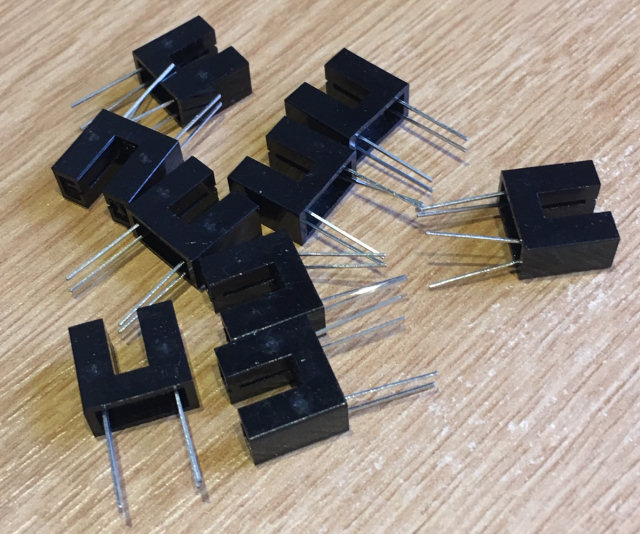

As part of our research we have connected some of the beds in our @smartest_home. With little movement occurring at night in a smart home, a connected bed is a very useful source of occupancy and presence information for the contextual smart home. If we can detect a person in a bed, then we know with certainty that the bed is occupied, the bedroom it resides in is occupied and the home is occupied.
The main challenge was to develop a bed occupancy sensor that provides a reliable and timely indication of occupancy and presence. We experimented with pressure mats but found that they simply didn't work very reliably. Most require a highly localised source of pressure in order to trigger. We also wanted to use sensors that sit underneath the mattress and could not be felt by the occupant of the bed.

All of the beds in our home use a mattress that sits on wooden slats. These slats deflect noticeably when some one lies on the bed. Typically the movement is around 25mm to 40mm. This is too much movement to use a normal push switch, so we are using slotted optical sensors mounted below the slats. A piece of plastic fixed to one of the slats is used to break the light beam of the slotted sensor.
For this project we are using one of our smart home building blocks, the optically-isolated input board.
The opto-input board is connected to an Arduino processor and this runs some signal conditioning software. We could simply send messages to our Home Control System each time the sensor goes on or off but this would result in many unnecessary events. Our research showed that someone turning over in bed can result in short duration transitions. The software handles these and extracts and sends only the significant events, when it is sure someone has got on or off the bed. This means we can very reliably know if a bed is occupied and also accurately track how long the bed was occupied for.
Our smart home is only as 'intelligent' as the information and context available to it. Bed sensors provide extremely timely and accurate occupancy data at a time when many sensors in the smart home are providing no useful information, due to lack of movement by people around our home. This data goes into the wider pool of information and context our smart home uses to make intelligent decisions.
Beds (and other furniture using this technique) are providing 'persistent occupancy' data, which means we know the bed remains occupied until the sensor tells us it isn't. This is different to a most sensors (e.g. a PIR sensor), which provides single events and an indication of occupancy that has no long-term value in isolation. This project is focused on beds but the same technique could be applied to any piece of furniture in any room, e.g. the sofa in our lounge. Because it is real-time data, it can also be used to enable our smart home to accurately count the number of people in our home. This provides more, rich context to enable powerful and useful features.
Combined with other data (much specific to each family structure and home layout), it is possible to infer very powerful things, such as which family members are in the home and which ones have gone to bed. This enables rich personalisation and advanced features in the smart home.
This is a clear example of data that has huge privacy implications and in our view, it is a clear indicator of the direction that the contextual smart home is heading. It supports our view that the 'pool' of smart home information and context needs to reside securely within your smart home, with only a tiny subset of it being shared with third parties and only then in a secure and controlled manner. This is why our smart home currently uses no third party cloud services for its main features and functions.
Our research has shown that in order for the smart home be considered truly smart it needs a complete and accurate 'pool' of information and context, a view of everything that is going on in our home. This includes real-time events, historical events and state information. It could be considered our smart home's memory if you like. This is something we call whole home context.
In order to make sense of this though, it needs to have some structure and this is achieved by using models. A more accurate description would probably be a series of interconnected pools, rather than one single pool. Our smart home currently models all of the key things found in any home and also some of the more unique elements we have developed over the last 14+ years. This includes things like people, zones/rooms, occupancy and presence, sensors, sensor types, data types, limits, time periods, objects, object types, object characteristics, etc.
In order to make timely, intelligent decisions this 'pool' needs to be instantly accessible and this is why we keep it all within our home and not in the cloud or on some other remotely hosted server. Minimal latency is key to delivering a great user experience. In some cases the order of events is critical, so having random delays introduced by Internet connections and Internet services is simply not an option. This is why we think the majority of consumer smart home services have the wrong architecture going forward.

Occasionally, our @smartest_home will share tweets based about our connected beds.
The bed sensor also provides input into our contextual smart home Up Up algorithm.